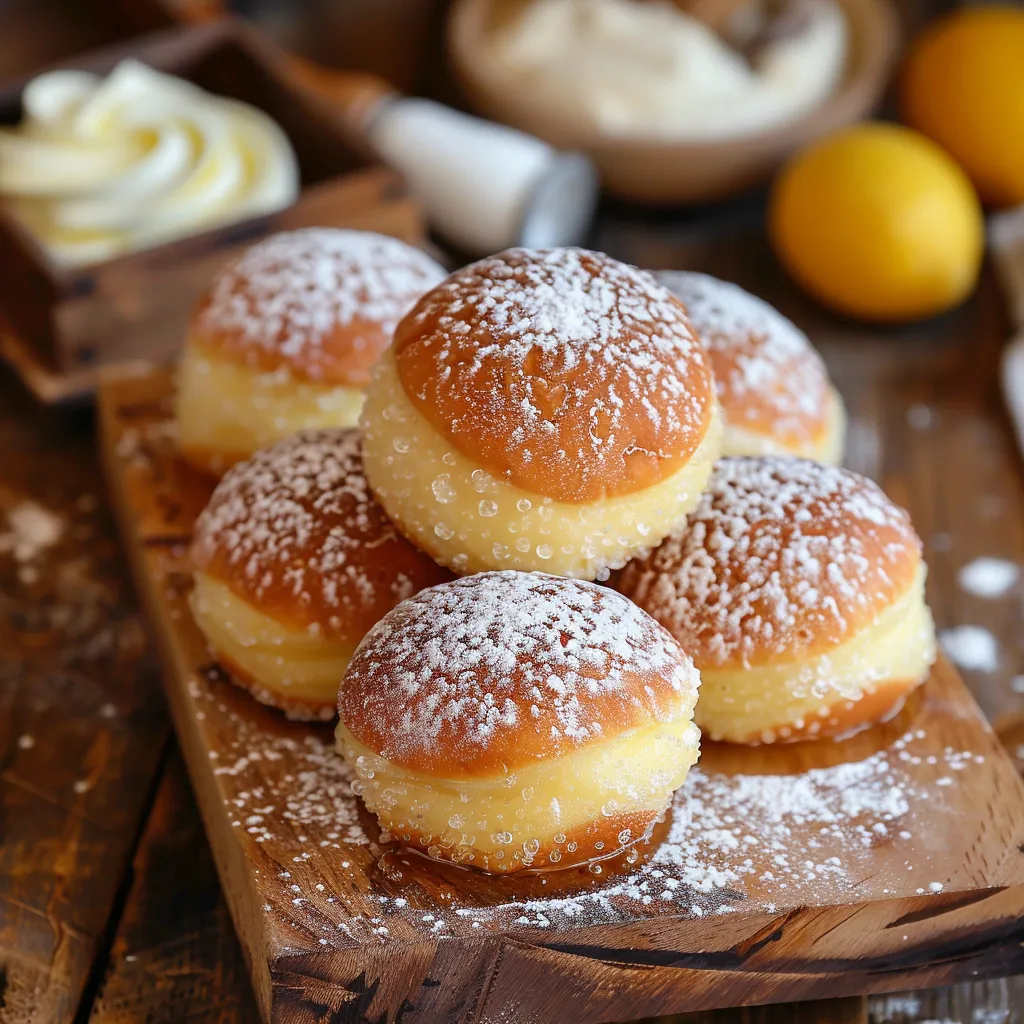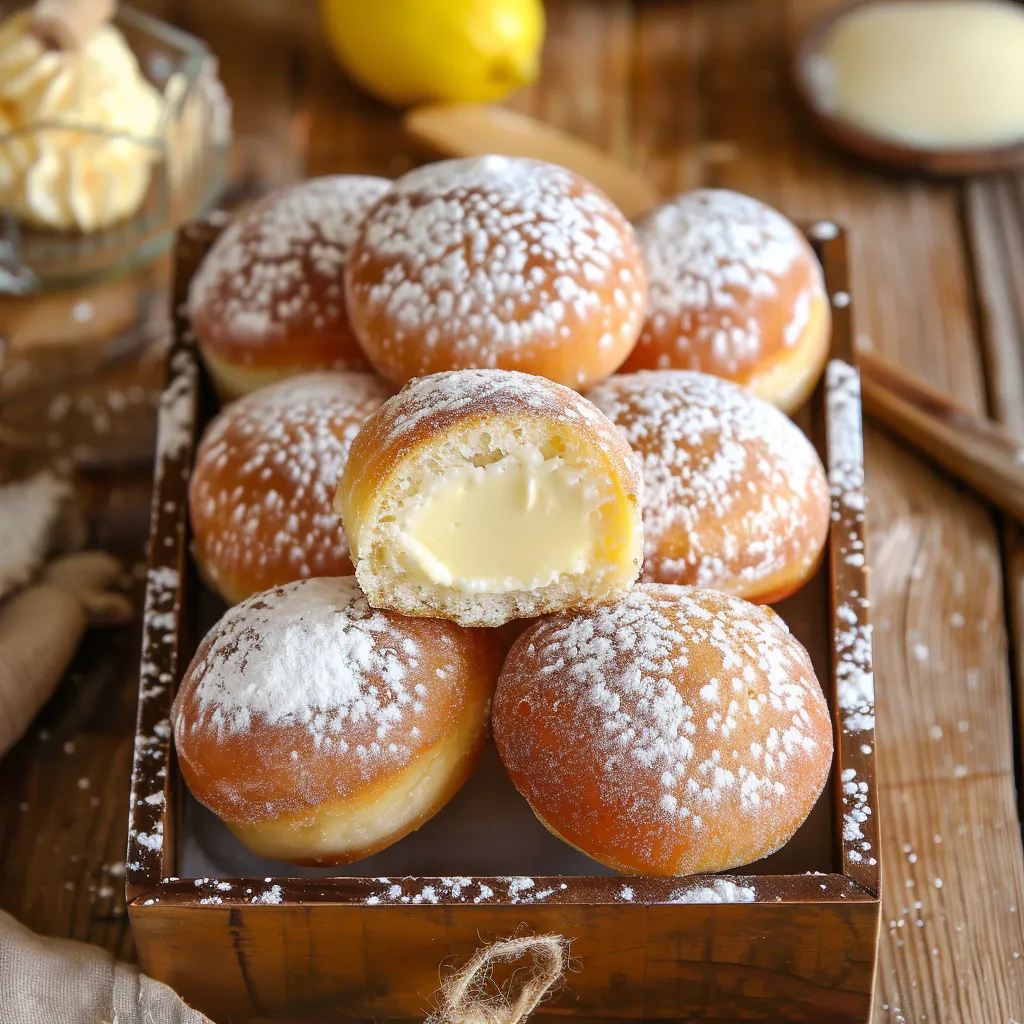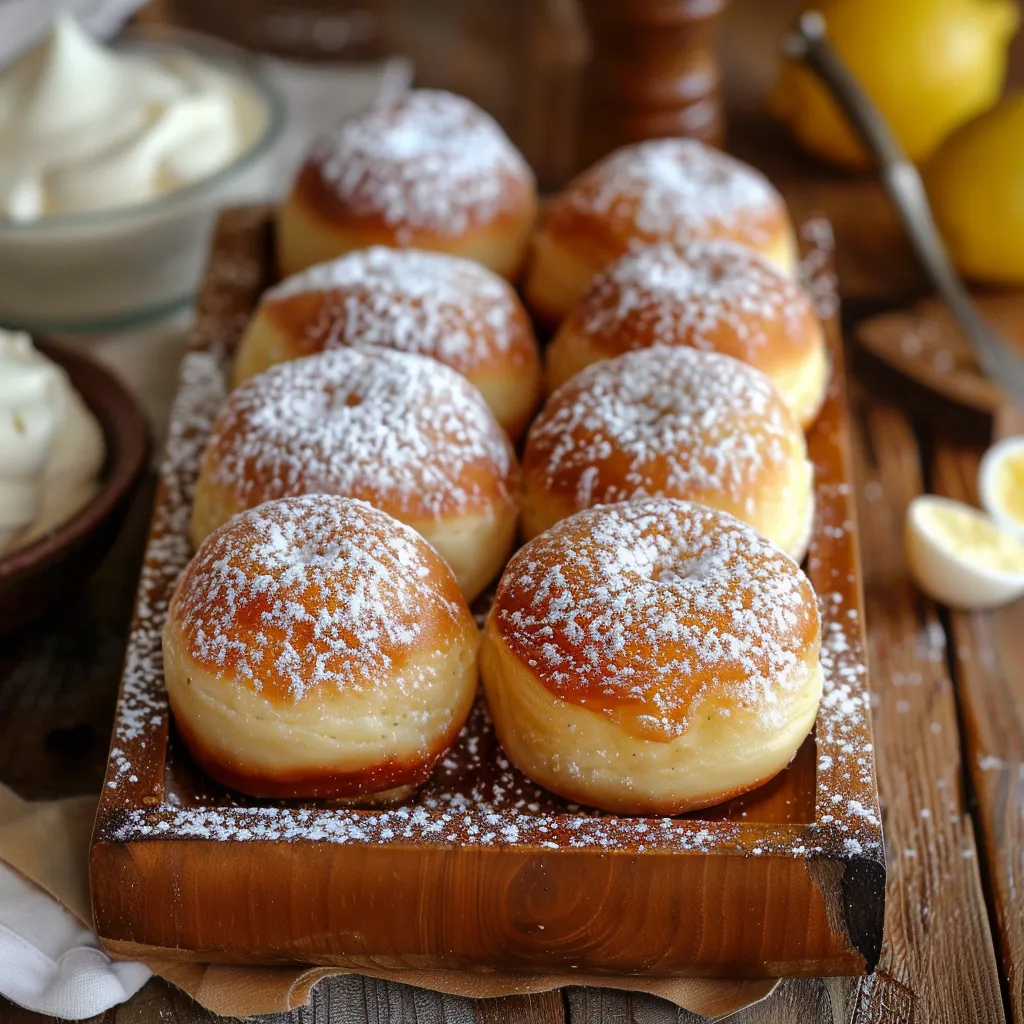 Pin it
Pin it
The sweet smell of home-cooked Bomboloni brings an Italian morning vibe straight to your home. These fluffy, soft doughnuts with their light sugar coating and stuffed with smooth, creamy filling, bring you the real taste of Italy's baking heritage that's been fine-tuned through the years in local cafes and family kitchens throughout the country.
When I first tried making Bomboloni, it took me right back to those early Florence mornings where I picked up this method from a baker whose family had been making them for three generations. He showed me how waiting during the rising stage is what turns regular dough into something magical.
Key Ingredients for Amazing Bomboloni
- Italian flour: Gives you that special soft interior and gentle texture. The way it's finely ground really matters for authentic results
- Fresh eggs: Keep them at room temperature to help the dough grow properly and get that famous light feel
- High-quality whole milk: Adds a richer taste and gets the yeast working the right way
- European-style butter: Contains more fat which makes a tastier, softer doughnut
- Pure vanilla extract or vanilla bean seeds: Add deep flavor that makes these doughnuts hard to resist
Making Your Bomboloni
- Start your dough adventure:
- Mix the flour and yeast in a big bowl, making a hole in the middle. Pour warm milk mixture in slowly, letting everything gradually mix together. This slow start helps make super tender doughnuts.
- Get the kneading right:
- Work the dough firmly but carefully. You'll feel it changing in your hands, getting smooth and stretchy. When it's ready, the dough should feel silky with tiny bubbles forming inside.
- First rising needs time:
- Put your dough in a bowl with a bit of oil, cover with a damp towel. It needs time to build flavor and structure, growing almost three times bigger over 2-3 hours in a warm spot.
- Shape them gently:
- Roll the dough with steady, light pressure. Cut with clean, straight motions - don't twist or you'll seal the edges and block proper rising.
- Second rising matters:
- Lay your cut doughnuts on parchment paper with room between them. This second rise is super important for getting that famous light texture.
 Pin it
Pin it
In my Italian-American family home, my grandma always used real vanilla beans for the cream filling. She told us those tiny black dots were like 'little stars in a creamy sky' - that small touch made her Bomboloni famous at every family party we had.
The Science of Great Frying
Keeping your oil at the right heat is the key to that perfect golden outside. Test by dropping in a small bit of dough - it should float and bubble gently with tiny bubbles appearing around the edges. Each doughnut needs its own space to grow and brown evenly, creating that special light-colored ring around the middle.
Getting the Filling Just Right
Filling these Italian treats takes both care and skill. You've gotta wait until they're totally cool or your cream will melt, and finding just the right spot for your piping tip makes sure the filling spreads evenly inside. I've found that squeezing gently while slowly pulling the tip back gives you the best dough-to-filling balance.
Fun Ways to Mix It Up
Turn your Bomboloni into something special by trying different fillings. Stuff them with Nutella for a modern take, or use seasonal fruit jams to connect with the Italian way of cooking with local stuff. Some newer Italian bakeries even make savory ones filled with ricotta cheese and herbs.
How to Keep Them Fresh
Keep unfilled Bomboloni in a sealed container at room temperature for up to two days. Once you've added filling, try to eat them within 24 hours. If you need to make them ahead of time, freeze the plain ones without filling or sugar for up to a month, then thaw, warm them slightly, and add filling right before serving.
 Pin it
Pin it
After working on this recipe for years, I've learned that Bomboloni aren't just doughnuts - they're a lesson in patience and getting details right. The whole process, from the soft kneading to the careful filling, becomes almost like a ritual that ties us to Italian baking traditions. When you take a bite of a well-made Bomboloni, you're not just eating a doughnut; you're tasting hundreds of years of Italian pastry skill in every single bite.
Frequently Asked Questions
- → Why do I need to use two types of flour for Bomboloni?
- Mixing bread flour with 00 flour gets you just the right consistency - the bread flour adds strength while 00 flour makes them soft. You can swap in regular all-purpose flour instead of 00 flour if you can't find it.
- → How do I know when the oil is at the right temperature?
- Grab a sugar thermometer and aim for 170°C/337°F. When oil gets too hot, your doughnuts will turn brown outside but stay doughy inside.
- → Can I make the dough ahead of time?
- For sure, you can make your dough and let it rise in the fridge overnight. Just remember to warm it up to room temperature before you shape it and let it rise again.
- → Why did my pastry cream turn lumpy?
- You'll get lumps in your cream if you rush the heating or don't stir enough. Go slow with low heat and keep whisking the whole time to get it nice and smooth.
- → How long do filled Bomboloni last?
- Filled Bomboloni taste best when you eat them the same day, but you can keep them in sealed containers for a day or two. They're always yummiest right after they're made, though.
